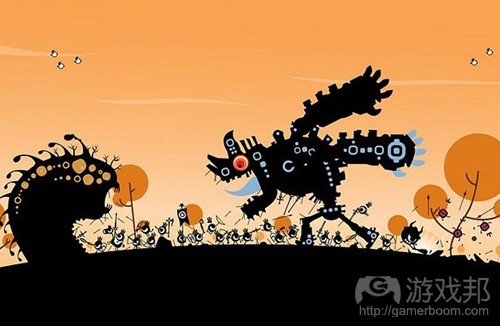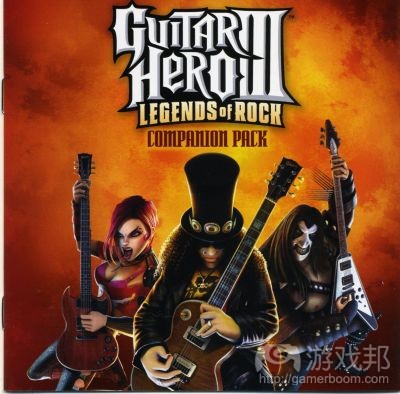阐述硬核玩家需为社交游戏平反的理由
作者:Roph Koster
游戏邦注:本文发稿于2010年3月18日,所涉时间、事件和数据均以此为准。
GDC大会上,社交游戏和硬核玩家间的文化冲突表露无遗,我甚至被硬核玩家称为叛徒。在颁奖会上,Zynga代表人声称社交游戏奖项授予《Farmville》并在台上做少许推销之举时,现场不仅嘘声一片,而且还有人吼道:“你们做的根本不是游戏!”在此玩家汇集之地,这是种普遍观点。
对此,我有非常多的想法。《Farmville》确实是款游戏,只是相对那些“高级”游戏而言所需的技能相对较少。但是,它完美契合了所有游戏合理定义的条件:你必须在游戏中做出选择,这些战略选择虽不具有即时性,但节奏缓慢的游戏传统亦由来已久。做出选择需要知识和技能,行家笑称此类技能为“电子数据表游戏”,然而《EVE Online》及其他MMO游戏也采用这种方式。你必须做好面对挑战的准备。你可能将事情办得很糟糕,也可能因做法恰当而获得奖励。
对那些会玩复杂运营模拟游戏的人来说,社交游戏似乎有些简单,但如果将其视为给该题材新手提供的训练版本,你就会认同此类游戏。我觉得没玩过早期游戏的人根本不知道他们今天享受的游戏复杂性是过去十数年积聚至今的成果,它呈现出的是典型的题材发展史。社交游戏比多数在1970年至1988年间制成的游戏更为高级。
社交游戏确实具有社交性,只是它们所采取的模式与即时同步游戏不同而已。它们为玩家的异步行为提供奖励,而并非MMO中的组队作战、参加足球队或成为合唱团成员等即时团队行为。更具体地说,社交游戏中有大量《星球大战:星系》和《阿斯龙的召唤》固有的那类弱连接社交设计,如赠礼物品、互惠网络等。而且对于某些东西,它们正探索比MMO游戏更深层次的内容(游戏邦注:MMO游戏必须有同步性支持)。何种社交连接更有意义,是用户每周登录游戏一次参加团队活动,还是每天登录游戏向朋友赠送礼物?如果你深入查看社交网络数据,就会发现这个问题其实并不简单。
其实,社交游戏也可以视为MMO。尽管核心行为仍是单人游戏,但赠礼、施肥和与他人合作建造房屋等都需要使用大型多人技术。虽然还未真正构建出虚拟世界,但某些游戏确实带有即时聊天的功能,而且此类游戏会随时间推移逐渐增多,毕竟许多情况下这是种增加游戏价值的功能。
很久以前,我曾撰文阐述《美国偶像》是否也是一种MMO游戏。在那篇文章中,我写道:“令人感到惊讶的是,多数MMO中集体行动的作用如此之小。这种媒介可以让集体行动发挥得比其他游戏类型更好,然而我们看到此类行为的次数仍然相对较少。只有在团队活动时,我们才会这么做。之所以认为集体行动与虚拟空间的强度不符,是因为MMO所提供的空间可容纳下数千次的集体行动,而不是数十次。”
社交游戏做到了这一点。集体行动正开始出现在社交游戏中,而且渐渐变多而不是变少,尽管这只是种该题材的假想核心前提。社交游戏并非我们现在心中所想的虚拟世界,但正如我所说,虚拟世界的概念正在发展中。
社交游戏能够产生盈利。大家用Google搜索下就可以知道上述说法属实!而且,并非所有盈利都是欺骗而来的,尽管之前确实有某些不光彩的做法。但并非所有游戏都这么做,如果说还有此类游戏,它们也正随着市场清理越来越少。即便是它们靠花招骗钱之时,也赚不到多少钱。
社交游戏不只是潮流。外界对许多东西有过同类的想法,如体感、3D图像等。2008年,Gamasutra曾发表文章探讨复古游戏是否属于潮流,3D图像足够成熟之前,也有人质疑这是否仅仅是潮流。判断的关键点在于,这一领域是否存在推动事物朝某个特定方向发展的潜在技术和社会因素。
关于复古风格(游戏邦注:这种美学设计现已在游戏行业中确立自己的地位),能提供答案的缘由从某种程度上来说有点复杂。年轻玩家会同等看待先前的美学风格,不会像老玩家那样根据技术来判断它们的质量。游戏设计中的创新和艺术想法让图像回到8位机时代,像素化外观成为某种身份的象征。技术为其发展保驾护航,普通游戏开发平台Flash的崛起产生由显示屏限制推动的“Flash美学”,也就是今日我们在《PixelJunk Eden》和《Patapon》等主机游戏中看到的那样。
对于3D问题,技术上的进步使其逐渐生效,从小花招发展成为工具。未来3D显示器或体感技术或许也将如此。
对于社交游戏,你也需要审视整体环境。正如我已多次提到的那样,所有游戏都正在发展出连接性体验,社交网络成为粘合体验的胶水。许多公司依靠社交游戏横扫所有只有游戏玩家的网络平台。这些网络的价值在于朋友间的连接性、内容通过社交关系传播的简易性和网页可接入性等等。这些都是我们现在认为理所当然之事。那么,未来投资情况是否会发生改变呢?这是确定无疑的事,随着众人渐渐习惯于所处市场的状况,该领域的白热化状态也必将褪去。
社交游戏不会变成硬核游戏。AAA开发商希望在市场中确立自己地位的时候,时常会带有这种错误的观点。社交游戏会随时间变得更为复杂,然而是在它们已经行进的方向上渐行渐远。
如果你观察时下的AAA游戏世界,会发现几乎所有内容都来自早期的硬核游戏市场。视频游戏有运动、龙、机器人、枪支、跳跃攀爬和汽车等元素,这些都是早期的主流想法类别。数十年后的今天,它们依然是主流想法。发展过程中也萌生出许多其他想法,但从某种程度上来说它们都甚为离奇,如《过山车大亨》、《吉他英雄》或《模拟人生》等游戏。而让“过家家”之类的游戏(游戏邦注:指非主流游戏)脱离主流的唯一原因是次文化大行其道。
然而,社交游戏正在发展壮大,并没有遇到上述问题。于是,它们有了与众不同的判别前提。许多看似“离奇”的东西显得很“正常”,反之亦然。核心设计原则是合作而非竞争、异步而非同步、社交动态以及异乎寻常的核心文化内涵等。
随着时间的流逝,新用户会逐渐变得成熟。他们已经完全认同了所有的社交游戏元素。如果你愿意,可以将农场游戏与其他题材同等看待,设计与WASD(游戏邦注:传统游戏移动角色的按键)、连击点数、技能点分配和火箭跳跃几乎无异的玩法。所有即将发生的事情在设计发展史中都曾出现过,只是潜藏了某些新想法:
1、文化涉及面更广。
2、不同技术推动不同核心艺术选择。
3、围绕异步社交性和大范围弱连接“公会”结构而构建的新颖且令人振奋的设计方式。
4、一整套全新的运营模式和做法。
社交游戏将沿着这些方向发展,而不是奇迹般地转变为目前硬核玩家所认同的硬核游戏。游戏开发行业会逐渐让用户迷上运动、龙、机器人、枪支、跳跃攀爬和汽车等题材游戏,这是种错误的想法。
尽管如此,硬核玩家也应该心存希望。在某些方面,这些游戏将成为“世界化”游戏的新家,它们正将为人们所忽略的题材带回游戏世界中。社交游戏会将游戏设计领域边界拓宽到目前尚未涉足的地区。模拟和战略类游戏很可能重出江湖,对于目前许多主流AAA战略游戏开发商转向社交游戏,我觉得这并不是个意外事件。
如果你渴望不断对世界产生影响,获得更好的社群和经济依存感,可以选择这个新兴市场。有款许多人钟爱的硬核MMO游戏中带有农场游戏,你需要每数天登录收获作物并决定下期种植的产品。这款游戏不是《Farmville》,而是《星球大战:星系》。在许多层面上,某些看似最为古怪或最不讨玩家喜爱的世界化MMO游戏特色中带有些许社交游戏核心功能,如修建房屋、经营店铺、农场、跳舞、装饰甚至理发。现在兼容两种特征的游戏不多,但这将被称为未来的发展方向。(本文为游戏邦/gamerboom.com编译,如需转载请联系:游戏邦)
What core gamers should know about social games
Roph Koster
The culture clash between social games and core gamers was on full display at GDC. I have been called a traitor to the cause of core gamers, even. At the awards show, when a Zynga rep claimed the social games award for Farmville and did a little bit of recruiting from the stage, he was not only booed, but someone shouted out, “But you don’t make games!” This is a common sentiment out there in the usual gamer haunts.
I have many many thoughts on all this — and I have been posting some of them in various places when discussions arise. Yes, Farmville is a game. It just requires fairly little skill compared to games for “advanced” gamers. But by any reasonable definition of game, it fits perfectly. You have to make choices (they are strategic choices rather than real-time, but so what? Games have a long tradition of slower play). The choices require knowledge and skill (the skill is what gets derisively called “spreadsheet gaming” by the cognoscenti, but that’s a brush that EVE Online and other MMOs have been tarred with too). You have to prepare for the challenge. You can screw up. You get rewarded for doing well, etc.
It may seem elementary to those who can juggle complicated business sims, but think of it as the training wheels version for novices to that genre, and you won’t be far off. I think people who didn’t play games in the early days forget that the level of complexity they enjoy today is a phenomenon of the last ten years, a symptom of typical genre development. Social games are more advanced than most of the games made from 1970 to 1988.
Yes, social games truly are social. They just work on somewhat different modes than real-time synchronous games do. Instead of rewarding real-time teamwork the way that group combat in an MMO, playing on a soccer team, or being a member of a chorus line does, they reward asynchronous behaviors. Most specifically, there is a lot of exactly the sort of weak-tie social design that was intrinsic to Star Wars Galaxies and Asheron’s Call: stuff around gifts, networks of mutual benefit, etc. More, they are exploring some of these things in a deeper way than MMOs do (because MMOs fall back on the synchronous crutch). Which is more indicative of social ties, a user who logs in once a week for a raid, or a user who logs in every day to send every friend a gift? The answer is not straightforward, if you dig into social networking data.
Yes, it is arguably even an MMO. The core activity is single-player, but the features around gifting, fertilizing, helping build structures collaboratively, etc, are all massively multiplayer techniques. Oh, they are not yet truly virtual worlds, though some of them do feature real-time chat, and more will over time, because in many many cases it is a value-add of a feature.
Long ago, I posed the question of whether American Idol was an MMO. And in that post, I said, “It’s surprising, in a way, how little collective action matters in most MMOs. Here’s a medium that allows it better than any other game type, and yet we still see fairly little collective action — and when we do, it’s raids — arguably, exactly the wrong sort of collective action to really play to the strengths of what virtual spaces can do, precisely because what MMOs offer is spaces with thousands in them, not spaces with a few dozen.”
Well, here we are. Collective action is starting to matter in the social games, and it’s going to matter more, not less precisely because it is an assumed core premise of the genre. No, social games are not what we think of as a virtual world. But as I said the other day, that definition is evolving.
Yes, social games make money. Do some Googling, people! And no, it’s not all from scams. Yes, there are shady practices. But not all games use them, and if they do, it is less every day as the market gets cleaned up. And even when they do, they are not the bulk of the money.
Social games are not just a fad. There have been a lot of comparisons to things like motion control, 3d imaging, and so on. But back in 2008 there were Gamasutra articles about whether retro-looking gaming was a fad; before 3d graphics got good enough, there were questions about whether it was a fad… the key thing to look at here is whether there are underlying technical and social factors that are pushing development in a particular direction.
In the case of retro looks (which are now a firmly established aesthetic), the answer lay in the somewhat complicated fact that a younger gamer sees all previous aesthetics side-by-side and does not judge their quality based on technology, the way that older gamers do. A push towards innovation and artistic intent in game design called forth the ghost of the 8-bit era, and the pixelated look became an identity badge. Tech helped this along — the rise of Flash as a common game development platform resulted in a “Flash aesthetic” driven by the display limitations that today we see in console games such as PixelJunk Eden and Patapon.
In the case of 3d, the march of technology simply made it work over time, and it evolved from gimmick to tool. This may yet happen with 3d displays as well, or motion control.
In the case of social games, you have to look at the overall context too. As I have been saying for quite some time, all games are becoming connected experiences. And it turns out that social networks are becoming the glue. They are sweeping away all the “gamer-only” networks that so many companies started. The value in these networks lies in the connectivity to friends, the easy distribution of content across the social graph, the web accessibility, and so on. These are things that we now take for granted. The genie is not going to go back into the bottle. Now, is the investment level going to change? Absolutely. The white-hot heat around the segment will definitely subside as everyone gets used to the fact that the market is here to stay.
No, social games won’t turn into core games. This is one of the misconceptions that AAA developers often have as they try to establish themselves in the market. It is absolutely true that social games are going to grow more sophisticated over time. But they will do so by growing further along the direction they have already been going.
If you look at the AAA game world today, you can trace just about everything in it to the early core gamer market. Video games got going with sports, dragons, robots, guns, jumping & climbing, and cars. Those were the first big ideas. And here we are now, decades in, and they are still the big ideas. Many other ideas have come along since, but somehow they have always been quirky, “outside the mainstream” — like, say, when Rollercoaster Tycoon, or Guitar Hero, or The Sims came along. The only way something like “playing house” can possibly be “outside the mainstream” is if there’s a subculture in charge.
Well, social games are here and they managed to get themselves established largely without reference to those tropes. As a result, they have a different set of starting premises. Many of the things that were “quirky” are “normal” and vice versa. Central design tropes include cooperation rather than competition; asynchronous rather than synchronous play; social dynamics; and a very different set of core cultural references. There’s more.
What will happen over time is that this new audience will grow in sophistication. They already take for granted all of the elements of a farming game, for example. You can think of the farming game as equivalent to any other genre, and replete with design tropes that are exactly equivalent to conventions like WASD, hit points, skill point allocation, rocket jumping, and tank-nuker-healer, if you like. All that is going to happen is a recapitulation of design history, only with a new of new assumptions embedded in the games:
A far broader set of cultural references.
A new and different set of core artistic choices driven by different rendering technology.
A fresh and exciting set of design paradigms built around asynchronous sociability and large-scale weak-tie “guild” structures — hoo, is there a design essay lurking in the difference between a guild and a neighbor ring…!
A whole new set of business models and practices.
What this boils down to is that social games will grow along those axes, and not magically turn into what core gamers today consider to be core games. It’s a mistake to think that the game development industry is going to manage to magically make this audience fall in love with sports, dragons, robots, guns, jumping & climbing, and cars.
But there’s hope for core gamers nonetheless: These games are the new home of “worldy” games, in some ways. And they are bringing neglected genres back to life. Social games are going to push boundaries in design areas that are currently neglected. A renaissance in simulation and strategy games is likely, and I don’t think it is an accident that so many prominent AAA strategy game developers are in social games now.
If what you have craved is greater user agency and impact on a persistent world, a greater sense of community and economic interdependence — those are features that are intrinsic to this new market. As an example, I would point out that there was a core MMO game that many of the readers of this blog loved that had a farming game where you had to check in every few days to collect your stuff and decide what to try to harvest next. And it’s wasn’t Farmville. It was Star Wars Galaxies. In many ways, the features that were seen as oddest or least “gamer-like” in the worldy MMOs are going to be among core features in the social games: housebuilding, shopkeeping, farming, dancing, dress-up, even hairdressing. Right now, these are one-to-a-game. But one possible direction of development is that they not be.
I have thoughts on what all this means for the core games we know and love, but I’ll leave those for another day. (Source: Roph Koster’s Website)

























.jpg)
















 闽公网安备35020302001549号
闽公网安备35020302001549号